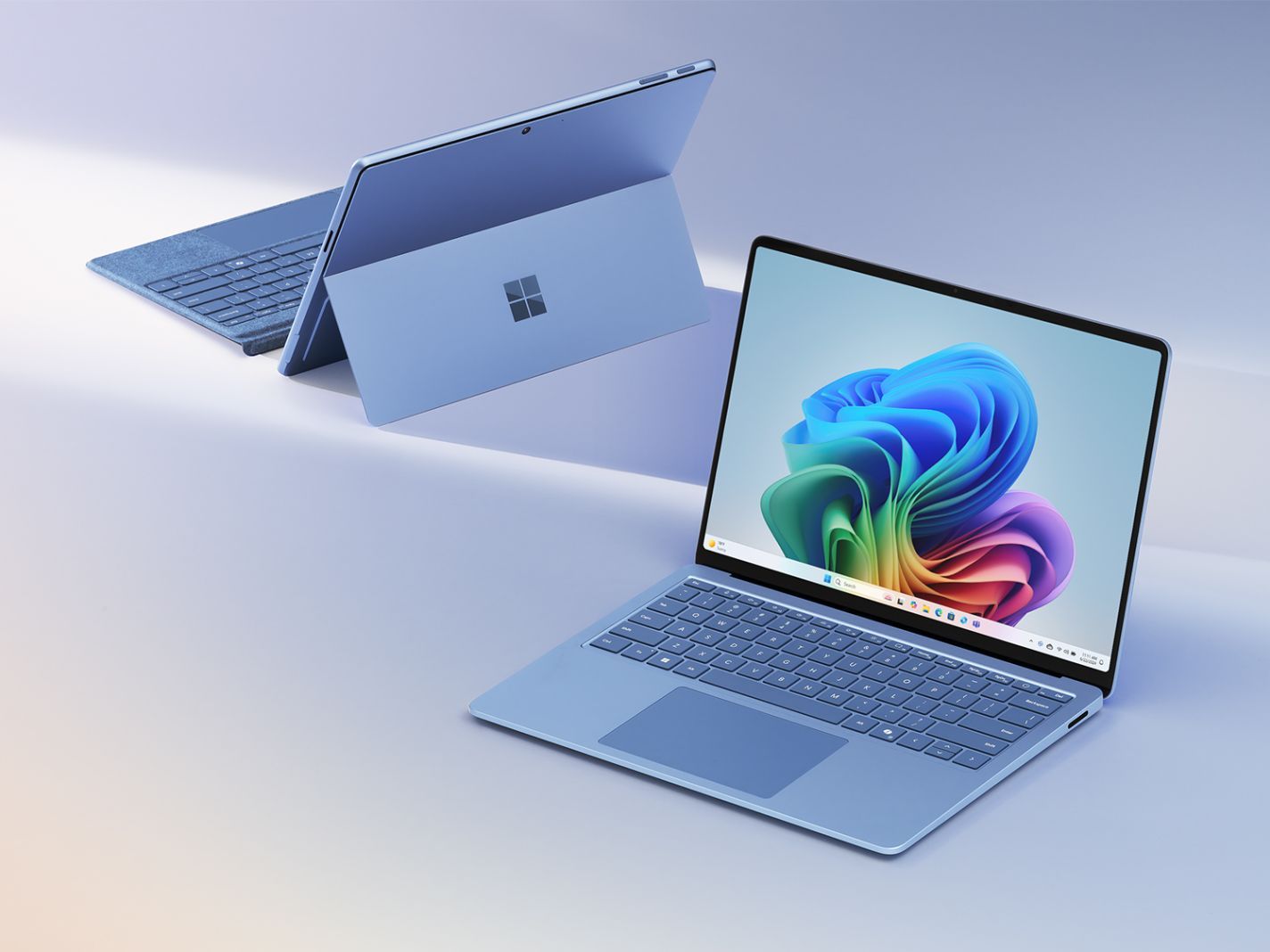
By someone who actually likes Surface—but is tired of watching it fail
Let me say this upfront: I actually like the Surface lineup. In fact, Microsoft makes some of the best Windows hardware out there. The design, the build quality, the clean Windows experience—on paper, it should be dominating the premium PC market. But it’s not. Surface sales have been in steady decline for multiple quarters, and from where I sit, it’s no mystery why.
1. ARM Was Delivered Half-Baked
Microsoft jumped into the ARM processor race trying to catch up to Apple’s M-series momentum, but the execution was rushed and incomplete. They didn’t just underdeliver—they shipped a product that wasn’t ready for prime time.
The biggest failure? They didn’t ensure that key software worked out of the box. Popular tools, enterprise applications, and even some Microsoft products had compatibility issues. Instead of setting developers up for success or creating a seamless Rosetta-style translation layer like Apple did, Microsoft left users to figure out what wouldn’t work after they bought the device.
Even now, years later, these problems still linger. Developers don’t prioritize ARM Windows, IT departments are hesitant to deploy it, and end users are frustrated by inconsistencies. If you’re going to push a new architecture, the burden is on you to make it seamless. Microsoft didn’t.
ARM could have been a game-changer for Surface. Instead, it became a warning label.
2. Marketing That’s Practically Nonexistent
Let me also be clear: I’m not going to just pick on Microsoft’s marketing. Frankly, Apple’s marketing has been a dud lately, too. Their product launches have felt flat, and the buzz that used to surround every keynote has dulled. But the difference is that Apple built a marketing machine years ago that still carries momentum. Microsoft never had that cultural foothold to begin with—and now they’re suffering for it.
Here’s a reality check: when most people are shopping for a new computer, “Microsoft” isn’t even on their radar. They’re thinking MacBook, maybe Dell or Lenovo, or more recently, Chromebooks. Microsoft simply doesn't know how to market Surface as a premium, innovative, must-have brand.
There’s no cultural moment. No identity. No edge.
Apple shows people why their devices matter. Microsoft just lists specs on a webpage. Where’s the bold storytelling? Where are the influencers, the lifestyle ads, the real-world user stories? Even tech-savvy users don’t know why they should choose Surface over other PCs—unless they’re already deep in the Microsoft ecosystem.
Even when Microsoft announces new Surface products, their events feel like footnotes. No buzz. No wow factor. They’re still marketing Surface like it’s a peripheral—not a platform.
And it’s not just Surface that’s missing the mark. Try going to Microsoft’s website and signing up a school or nonprofit for Microsoft 365. It’s nearly impossible for the average person to figure out what to do. There’s no clear path, no intuitive guidance, no streamlined onboarding experience. Just layers of documentation, confusing sign-in portals, and endless redirects. The same goes for other genuinely powerful products in the Microsoft portfolio—they're buried under bureaucracy and bad UX.
Microsoft’s biggest strength—its massive product ecosystem—is also its greatest weakness, because they don’t know how to communicate it simply. Great tools become well-kept secrets. Meanwhile, companies like Google and Apple make it easy, clear, and fast to get started. That’s not a tech problem. That’s a marketing failure.
3. Support That Makes You Regret the Purchase
Let’s talk support—because this one is killing them.
Microsoft’s support for Surface devices is notoriously bad. It’s outsourced. It’s slow. It’s often uninformed. When you buy a premium device, you expect premium service. Instead, users are bounced between frustrating phone calls, contradictory instructions, and a general feeling that no one on the other end has ever touched a Surface in their life.
Apple has its Genius Bars and real, in-person help. Even Dell has stepped up its business support. Microsoft? You’re lucky if your issue gets resolved without spending a week on it.
And when support goes bad, it sticks. In tech, support isn’t just about fixing things—it’s about building trust. Microsoft is hemorrhaging that trust every time a Surface customer dials in and ends the call more frustrated than they started.
If you want to be taken seriously in enterprise, education, or high-end consumer markets, you can’t outsource customer experience. Support isn’t a cost center—it’s part of the brand.
4. Then There’s Windows 11… and the Trust Problem
Surface is tightly tied to Windows 11—and that’s becoming a liability.
Now, I’ll be clear: I personally have no issue with Windows 11. But many users do. Between the confusing UI changes, unnecessary feature removals, and relentless push of Microsoft’s own services, there’s growing frustration among longtime Windows users. And that frustration is bleeding into the Surface brand.
Then came Copilot—an always-on AI assistant that’s deeply embedded into the OS. Now, we’re seeing Recall, a feature that literally screenshots your desktop every few seconds so you can “go back in time.” That may sound like innovation to some, but to many users—especially in enterprise and security-conscious spaces—it’s a red flag.
The idea that your laptop is constantly watching, recording, and processing everything you do? That’s not productivity—it’s surveillance. And even if the tech is secure (which remains to be seen), the perception is what matters. Right now, Microsoft has a major trust issue on its hands.
And since Surface is Microsoft’s hardware showcase, it becomes the face of these decisions—fair or not. Users don’t separate the device from the OS. If people don’t trust what’s happening on their screen, they’re not going to trust the laptop that’s running it.
Microsoft needs to stop assuming everyone’s ready for full-blown AI baked into the core of their operating system. Some users just want a computer that works, respects their privacy, and doesn’t feel like it’s working against them.
5. Microsoft 365 Price Hikes Are the Icing on the Cake
As if all of this weren’t enough, Microsoft is also rolling out hefty price hikes to its Microsoft 365 Personal and Family plans. These aren't minor adjustments—they're big jumps that hit everyday consumers and families who just want Word, Excel, and cloud storage.
Why does this matter for Surface? Because Microsoft 365 is a core part of the Surface experience. It’s built-in. It’s marketed as essential. It’s the whole productivity pitch.
So now users are being asked to pay more for the software, trust less of the operating system, deal with questionable support, and still drop a premium price on the hardware? That’s a hard sell.
The optics are bad, and the timing is worse. In an era when trust in big tech is eroding, price hikes—especially ones without clear added value—feel like salt in the wound. It reinforces the perception that Microsoft is more focused on upselling subscriptions than delivering value.
6. People Want the Best—and Right Now, That’s Apple
At the end of the day, people and businesses are buying what they know, and what they trust. And right now? That’s Apple.
MacBooks—especially the M-series Airs—have become shockingly affordable for what you get. The new M4 MacBook Air with 16GB of RAM and a 512GB SSD is going for $1,049. That’s an incredible deal for a premium, fanless, lightweight machine with long battery life and best-in-class build quality.
And businesses are noticing. I know people on internal Microsoft Teams… using MacBooks. Why? Because their companies want to give them a machine that says “you’re valued”—and it works. It’s not about specs. It’s about the experience. And the Mac experience is consistent, respected, and trusted.
I’m still using my M2 MacBook Air from two years ago, and I’m not missing a thing. It’s fast. It lasts all day. And it feels like a tool I can rely on. That’s what users want.
In my opinion, the Surface line is the closest PC alternative to a MacBook. It really is. The hardware is excellent. The screens are beautiful. The typing experience is great. But Microsoft keeps missing its moment because it, like many large companies, still doesn’t understand how to market with simplicity and clarity. It’s all features and buzzwords—no story, no emotion, no “why.”
The Bottom Line
Microsoft has all the ingredients: great design, tight integration with Windows, and some truly innovative hardware. But it keeps sabotaging itself with half-baked initiatives, tone-deaf marketing, trust-eroding OS decisions, rising costs, and support systems that feel like they belong in a different decade.
The Surface lineup should be thriving. Instead, it’s floundering. And unless Microsoft fixes the fundamentals—by delivering polished ARM devices, rebuilding trust with Windows, clearly communicating value, and standing behind their product with real support—it’s going to remain a brilliant product that no one buys.
Bibliography
- Dans, E. (2023). What do declining sales of Microsoft's Surface tell us about the future of tablet computing?Medium.
- Windows Central. (2023). Microsoft's Surface revenue plummets by 30%.
- The Verge. (2024). Microsoft Q4 2024: cloud rules as Surface dips.
- Tom’s Hardware. (2025). Snapdragon X-powered Surface Laptop 7 gets 'frequently returned' label.
- Microsoft Community. (2024). I didn’t know what an ARM processor was when I bought it.
- TechTarget. (2024). Privacy and security risks surrounding Microsoft Recall.
- The Verge. (2024). Microsoft's Recall AI is creepy, clever, and compelling.
- Thurrott. (2025). Microsoft 365 Personal and Family Plans Get New Copilot Features and a Price Increase.
- Apple Newsroom. (2025). Apple introduces the new MacBook Air with the M4 chip.



